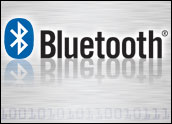
CBS is hoping an innovative approach will ignite excitement in its fall TV lineup. The television network is planning to use Bluetooth technology to beam clips of the new shows from billboards to the mobile devices of passersby.
Starting in September, billboards located in New York City’s Grand Central Station will feature an invitation for commuters with compatible mobile devices to link up with the advertisements.
Once they do so, using Bluetooth, they will be offered free downloads of clips from four shows debuting as part of the network’s fall lineup — “Shark,” “Smith,” “Jericho” and “The Class.” Clips will also be available from the popular drama “CSI: Crime Scene Investigation.”
Once they download and view them, users can either save the clips to view again or send them to friends.
“The ability to extend a brand’s message from the static two-dimensional poster to an audiovisual clip on a cell phone provides endless opportunities for out-of-home advertisers to extend their message,” said Jodi Senese, executive VP of marketing for CBS Outdoor. Such a preview of coming TV shows is a “tailor-made application for this technology,” Senese added.
CBS said it was the first known use of the technology by a TV network. The approach could be a boost for Bluetooth, which is widely used for close-in communications — such as from a wireless headset to a mobile phone and in automobile settings.
Closer Than They Appear
Users must be within about 36 feet of the billboards for the downloads to work, limiting the technology’s application in other settings, such as roadside billboards. By using Bluetooth, users can download the content without accessing their carrier’s networks, meaning the content is truly free by not requiring the use of airtime.
CBS said the new feature is a way to get more value out of its outdoor billboard advertising and reach a somewhat captive audience in the form of commuters moving through one of the busiest railroad and subway stations in the country.
Also getting a boost from the deal is CBS’ technology partner, MobiZone, a mobile content site operated by Kameleon Technologies.
The deal demonstrates how companies such as CBS can benefit from mobile applications, said Kameleon Chief Marketing Officer Patrick Nagle.
Showing Some Teeth
Another beneficiary of the model, should it take hold, is the outdoor advertising industry, which has tried to make its signs and billboards more interactive. Many European cities have long featured billboards that beam content — either streaming audio, video or digital images — to users.
The approach is feasible because more people are using handheld devices to view video content, said telecom analyst Jeff Kagan.
Users who are passing through or waiting for a train may well be interested in downloading and viewing content as a way to pass time, he added. It may take a while, however, to educate cell phone and PDA users about the option of using Bluetooth as a way to avoid incurring airtime charges.
“Users are already treating their phones more like a third screen after the TV and computer,” Kagan said. Meanwhile, TV viewers face so many more options for spending their leisure time that new techniques are needed to break through the clutter.
The Bluetooth approach will have the advantage of being a unique approach, at least for a short time, helping it “stand out and get noticed.”
CBS and its counterpart networks are moving aggressively to use new channels to distribute their content as well as promote it, making full-length downloads of newscasts and other programs available on the Web, for instance.






















































Social Media
See all Social Media